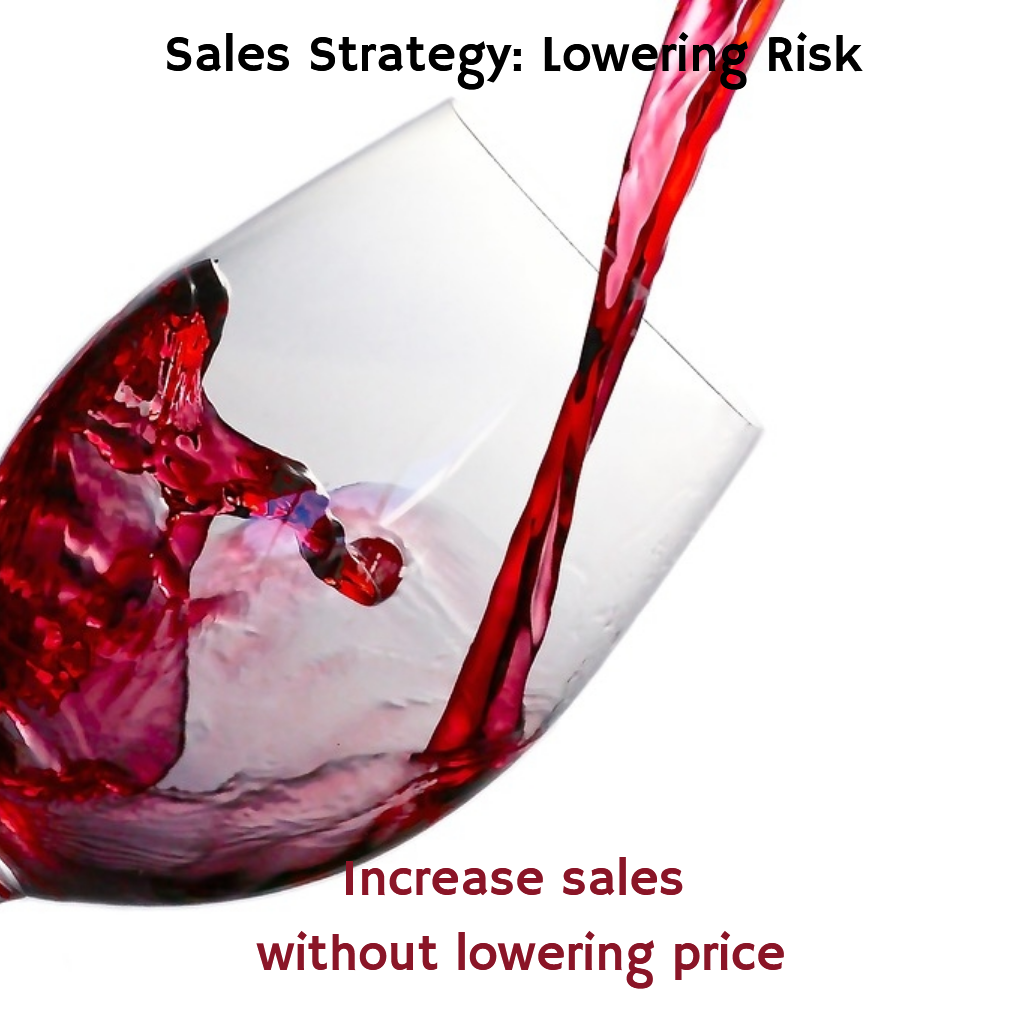By Dave Kahle
“How can I sell when I’m not the lowest price?”
I wish I had a dollar for every time I was asked that question in a sales training session. It’s certainly one of the most common questions I hear coming from professional sales people – and their bosses.
There are a variety of answers — too many for just one article. But, we can identify one of the most powerful ways to deal with this problem.
First, let’s start with this premise: “Low price” is not the main reason people buy! In every survey of buying motivations I’ve ever read, low price is never the primary motivation. Yes, it’s important. And, when everything else is equal, it will be the deciding factor. But very rarely is everything else equal. And very few people in this world buy only on the basis of low price. How many of you are driving used Yugos? Or wearing a suit you bought at a garage sale? Or watching an 8-inch black & white TV?
You’ve got the picture. You don’t always buy on the basis of low price, so why should you think that all your customers do?
The truth is, they don’t. And here’s a secret that almost nobody knows, including all those gurus telling you to sell value. They don’t always buy the best value. But, they can invariably be counted on to buy the lowest risk!
The biggest issue in the minds of your customers and prospects is not price, and it’s not value – it is risk.
What’s risk?
Risk is the potential cost to the individual customer if he/she makes a mistake. It’s not just the money, although that is part of it. It is also the social, psychological and emotional cost that your customer will pay if your choice isn’t the best one. The lower the risk of the decision, the more likely your customer will say “yes” to you – regardless of the price.
Let’s become comfortable with this concept of risk first, and then discuss how to use it in your sales efforts.
In order to really understand risk, you must first see this issue from your customers’ perspective. Try to put yourself in their shoes, and calculate the amount of risk that you expect your customers to take when you offer them an opportunity to say “yes” to you.
Here’s an illustration to help you understand this concept. Imagine that you are under orders by your spouse to pick up a package of disposable cups on the way home from work today because you’re having friends over for a casual evening of dessert and drinks tonight. You stop at the local grocery store, and make a selection between brand A and brand B. You pick brand A.
After you bring the cups home, your spouse mixes up a pitcher of margaritas and pours one. The drink leaks out of the bottom of the cup and puddles on the counter. There is a hole in the bottom of the cup. You pour your drink into another cup and it leaks, too. In fact, every one of the cups you bought is defective.
What happens to you in this instant in time? What is the consequence of your decision? I don’t know about you, but I would be the recipient of some negative emotion. My spouse would be upset with me. That may be the most painful cost of your decision. But there are other costs.
You’re going to have to fix the problem. If there’s time, you’ll have to run back to the store and replace the cups. So, in addition to the emotional cost, you must also pay in terms of extra time and additional money. All because of your bad decision. Those costs — negative emotions, time wasted, extra money spent — all combine to form the risk you accepted when you made your decision.
Here’s a simple exercise to help you understand this concept. Draw a short vertical line. At the top of the line, write the number 25. At the bottom, write a zero. Now on a scale of 0 – 25, where would you put the risk of buying a package of disposable cups? You’d probably say it is close to zero. So, put an X on the line from 0 to 25 where you think the risk of buying those cups would be.
Let’s look at an illustration at the other end of the scale. I once had an adoption agency as a client. When a young lady is in a crisis pregnancy, and she’s making a decision as to whether or not to release her unborn child for adoption, how big a risk is that for her? Put your X on the line that represents your assessment of that risk.
Most people put their mark around 25. The risk in this situation is a lifetime of consequences for at least four people – the mother, child and adoptive parents. That’s a very high risk.
Compare the X’s for the two different decisions, and you’ll conclude that different decisions carry with them differing degrees of risk.
Now, let’s apply this concept to your customers. Remember that every time you ask your prospects to say yes to you, they are accepting some risk. And each of those decisions you ask of them carries with it a different degree of risk.
Imagine your typical customer. Then think of the typical offer or decision you ask of that person. For example, take one of your newer products. Imagine you are presenting it to your customer for the first time. Now, put yourself in his shoes, and see the situation through his eyes. On the 0 – 25 scale, how much risk does your customer accept when he says “yes” to you?
For an easy way of calculating it, just ask yourself what happens to that individual if you, or your company, messes up.
If your customer buys that product and it doesn’t do what you claim it will, what trouble will that make for your customer? What consequences will he/she pay? What is the risk?
And don’t say that there is no risk because you’ll take care of any problem that might develop. You may think that, but your customer doesn’t know that. And remember, you’re trying to see this from your customer’s point of view, not yours. The amount of risk is what your customer perceives it to be.
I had a great example of the role of risk in sales several years ago. A young man approached me to help his company with their sales efforts. They were selling a product that was, at the time, a real state-of-the-art breakthrough. The company designed computerized controls that were retrofitted on production equipment. As a result of the use of these controls, the savings in energy consumption would pay for the cost of the equipment in less than a year.
It looked like a great product. But he couldn’t sell them as rapidly as the company wanted.
“Tell me how you go about selling them” I asked.
“We qualify our prospects to the point where we know we have someone who could use the equipment. Then I call the production engineer or the plant manager on the phone, and gather some information about the type of equipment they use. Then I create a written proposal showing the economic payback, and mail it to him. Next I call and try to close the sale.”
“Let me see if I understand correctly,” I said.
“You are calling a plant manager on the phone. I would guess that most plant managers are men in their 50’s, probably with advanced degrees, and who have been in the plant for a number of years, is that right?”
“That’s right.”
“OK,” I said. “So, you’re calling someone twice your age, asking him to spend $20,000 – $30,000 of unbudgeted money on equipment he’s never seen, from a company he’s never heard of, and from a sales person half his age who he’s never met. Is that right?”
My client became a little defensive. “If you put it that way, I suppose it’s right.”
“Well put it that way,” I replied, “because that’s the way he sees it.”
The problem was simple – risk. On that scale of 0 – 25, how much risk would you think the plant manager would be accepting if he said “Yes” to the over-the-phone offer?
Put yourself in his shoes. Suppose the equipment didn’t work the way it was supposed to? He could shut down production lines, spend weeks trying to make things right, cause all sorts of havoc in the plant, and potentially even lose his job. Now that’s risk.
If you were that plant manager, how much more than the original $20,000 quote would you spend to reduce the risk? It wouldn’t be hard to justify a price double that.
That should give you a clue as to how to fight the “low price” issue. Worry less about low price, and more about lowering the risk.
Here are four strategies to do so.
1. Build solid, deep relationships with the key decision-makers. Relationships mitigate risk. The greater the relationship, the lower the perceived risk. That’s why the salesman with the longer relationship almost always has the benefit of the doubt in a competitive situation. It’s not the price – it is the risk.
2. Make ample use of third party recommendations, customer lists, case studies and testimonials. All of these say to the customer that someone else (or lots of someone else’s) has used the product or service. That means it’s less risk for your customer to buy it.
3. Try to get your customer as physically involved with the product as possible. For example, if you’re selling a piece of equipment, try to get the customer to trial the equipment, or at least visit somewhere it’s being used. The more your customer can see and feel the actual thing, the less risk is it to them.
4. Finally, work with your company to create offers that reduce the risk. Trial periods, money-back guarantees, delayed billing, warranties, service desks – all of these reduce your customer’s perception of risk.
The winners in the competitive selling arena of the Information Age are those who are the low risk providers, not the low price people.
Copyright MMX by Dave Kahle
All Rights Reserved
source http://www.commence.com/blog/2017/07/28/how-can-i-sell-when-im-not-the-lowest-price/



No comments:
Post a Comment